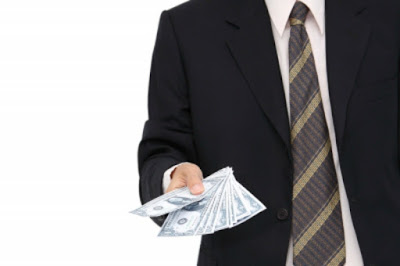Drinking is 'The American Way,' 'How We Roll,' 'Harmless Fun,' or just 'None of Your Damn Business.' Just ask a drinker. He or she doesn't even need to have the disease of alcoholism: You attempt to get between a person and the beverage of choice and you'll hear defense. The defense is offensive when you know the economics of the toxin and drug alcohol.
The economic impact of drinking – casual drinking and alcoholic use – tallies an eye-popping $250 billion every single year in the U.S. By way of comparison, smoking costs the economy $173 billion… all other drugs combined cost the economy $130 billion. A 2011 study in the Journal of the National Cancer Institute determined the cost of all cancer care in the U.S. totaled $124.5 billion in 2010 … half as large as the alcohol toll. How big is the we-don't-have-a-problem alcohol problem, by the numbers?
- That's enough to buy a 48 inch HDTV for every man, woman and child in the U.S. And an X-Box. Every year.
- Two-hundred-fifty billion dollars is the same as the annual expenditure on fashion and apparel in the entire U.S.
- The Treasury in 2008 bailed out the banks with a $250 billion “investment” that created critical echoing still heard in the 2016 Presidential campaign and brought hundreds of 99 Percenters camping in Wall Street. That was just a one year expense.
- For the ubersmart Keynesian economists out there, $250 billion is a NEGATIVE GDP (gross domestic product) value of $74 billion. (For those of us less-smart: Alcohol shrinks the economy the way it shrinks libido.)
- For the 216 world economies tracked in the CIA World Factbook, $250 billion is bigger than the 40th largest economy on the planet, and bigger than the output of the bottom one-third of countries COMBINED.
The costs are in healthcare, lost productivity, legal and corrections costs. Alcoholism is part of the total, but $250 billion is driven by all drinking, even social or moderate use. The CDC readily admits the $250 billion is on the low side, too. The researchers believe that the study still underestimates the cost of excessive drinking because information on alcohol is often underreported or unavailable, and the study did not include other costs, such as pain and suffering due to alcohol-related injuries and diseases.
Alcohol revenue does not cover alcohol economic damage
The monetary consequences are something everyone shares: Drinkers and non-drinkers alike. The numbers get complicated, because the drug Americans enjoy and defend so vigorously, also costs the most in health and hard dollars. Each drink consumed has a median cost of $2.05 in economic harm (lost productivity, health care costs, property damage and criminal justice system expenses). That's according to the Centers for Disease Control and Prevention (CDC). So the drinker pays for that in alcohol tax, right? No. The median paid in tax per drink is less than a nickel a drink. The Tax Policy Center estimates that state and local taxes on alcoholic beverages bring in about $6 billion in revenue nationwide. The overall economic benefit from the manufacture and distribution is less than a quarter per drink.
Alcohol revenue does not cover alcohol economic damage
The monetary consequences are something everyone shares: Drinkers and non-drinkers alike. The numbers get complicated, because the drug Americans enjoy and defend so vigorously, also costs the most in health and hard dollars. Each drink consumed has a median cost of $2.05 in economic harm (lost productivity, health care costs, property damage and criminal justice system expenses). That's according to the Centers for Disease Control and Prevention (CDC). So the drinker pays for that in alcohol tax, right? No. The median paid in tax per drink is less than a nickel a drink. The Tax Policy Center estimates that state and local taxes on alcoholic beverages bring in about $6 billion in revenue nationwide. The overall economic benefit from the manufacture and distribution is less than a quarter per drink.
Industry watchdog, Alcohol Justice, suggests closing the gap between tax revenue and the economic damage, which may also reduce use. According to Alcohol Justice's Charge for Harm Campaign, "Big Alcohol produces, sells, and promotes products that cause harm and incur costs - to both government and its citizens. Appropriately taxing alcohol at state and federal levels will help reduce related harm and provide needed funds. We support state and federal increases in alcohol taxes and fees."
Even if drinkers bore the full $2.05, everyone else still pays in lost productivity. Show up late, never, hungover or just without your A-game and someone has to step in or step up. It doesn't always happen that way. Which costs the company. So the company charges more for its goods or services. Lost productivity, according to the National Institutes of Health (NIH) is more than 70 percent of the $250 billion annual cost of alcohol use in the United States. Every shopper pays… no matter if we shop Walmart or Macy's.
Even if drinkers bore the full $2.05, everyone else still pays in lost productivity. Show up late, never, hungover or just without your A-game and someone has to step in or step up. It doesn't always happen that way. Which costs the company. So the company charges more for its goods or services. Lost productivity, according to the National Institutes of Health (NIH) is more than 70 percent of the $250 billion annual cost of alcohol use in the United States. Every shopper pays… no matter if we shop Walmart or Macy's.
This is the part of the revenue formula pro-alcohol forces leave out of the dialogue when pushing for more beverage licenses, longer hours of service, and absurd ideas like selling alcohol at college sports venues. With greater access to alcohol, the revenue does go up in a bar, store, or restaurant. But so does the economic damage. And never the twain shall meet.
Need a hospital bed? Wait. And pay more.
Here's another way to look at the economic harm. There is an alcohol-related hospital admission every 30 seconds and, according to the National Institute on Alcohol Abuse and Alcoholism (NIAAA) 20-40 percent of general use (non-specialty) hospital beds are used to tend to alcohol-related complications. Heroin addicts aren't breaking the healthcare system. Aging Baby Boomers aren't pushing it past capacity. Alcohol use is drowning it.
Here's another way to look at the economic harm. There is an alcohol-related hospital admission every 30 seconds and, according to the National Institute on Alcohol Abuse and Alcoholism (NIAAA) 20-40 percent of general use (non-specialty) hospital beds are used to tend to alcohol-related complications. Heroin addicts aren't breaking the healthcare system. Aging Baby Boomers aren't pushing it past capacity. Alcohol use is drowning it.
Health care costs related to alcohol use are not limited to the drinker. There are unintended – and sober – victims in traffic crashes you've no doubt heard about from the impaired driving activists, Mothers Against Drunk Driving (MADD). However, children of alcoholics who are admitted to the hospital average 62 percent more hospital days and 29 percent longer stays according to the Children of Alcoholics Foundation.
Nested inside of every major cause of death in the U.S. is the fact that alcohol use is a contributing factor to each of those causes of death or hospitalization. Alcohol is a carcinogen, for example. It is the second-leading cause of oral cancers and is the only dietary connection ever made to an increased risk of breast cancer. The Agency for Healthcare Research and Quality (AHRQ) estimated the price of cancer care for one year of life increased to $207,000 in 2013.
Heart disease, not cirrhosis, is the leading killer related to drinking. Annually, about one in every six U.S. healthcare dollars is spent on cardiovascular disease. By 2030, annual direct medical costs associated with cardiovascular diseases are projected to rise to more than $818 billion, while lost productivity costs could exceed $275 billion. What is the preventative measure hiding in plain sight? Stopping drinking. About 1 in 3 adults—or approximately 86 million people—have at least one type of cardiovascular disease, which means many more Americans could die from what is often preventable through lifestyle changes or managing medical conditions. There are 1.5 million heart attacks and strokes in the U.S. annually. One in five strokes is alcohol-related. One dollar spent on alcohol education (e.g. abstinence) saves $4 in healthcare costs down the road. (Plus $7 in criminal justice system costs for good measure.)
Bottom line: We ALL pay
The healtcare cost equation under mandated insurance means part of every insurance policy premium is gobbled up to care for alcohol-related problems. An insured person doesn't have an account from which he or she dips. Insurance premiums are pooled. You can be a non-drinker… your own premium will be lower because of your relationship with alcohol… but your premium will still reflect the experience of the insurance pool. With insurance mandatory, and 67 to 70 percent of adults using alcohol in the past year, there is a majority of your insurance dollar used to mitigate the expense of drinking.
The healtcare cost equation under mandated insurance means part of every insurance policy premium is gobbled up to care for alcohol-related problems. An insured person doesn't have an account from which he or she dips. Insurance premiums are pooled. You can be a non-drinker… your own premium will be lower because of your relationship with alcohol… but your premium will still reflect the experience of the insurance pool. With insurance mandatory, and 67 to 70 percent of adults using alcohol in the past year, there is a majority of your insurance dollar used to mitigate the expense of drinking.
Binge drinking alone – four or more drinks per occasion for a woman and five or more drinks for a man – accounts for more than 75 percent of costs related to excessive alcohol use in all states, just under $171 billion. Binge drinking is reported by about 18 percent of adults in America. (Wager that the self-reported binge drinking number is MUCH higher, people aren't typically honest about their answer to the non-of-your-damn-business question.) According to the CDC. binge drinkers and their families paid less than half of the costs associated with high alcohol use (41.5 percent) while federal, state and local governments paid about 42 percent, or more than $94 billion, of the costs.
The government doesn't have a separate checkbook funded by drinkers or beverage companies to pay for this: It uses your checkbook.
Visit www.alcohologist.com for more on the health and economic costs of drinking a toxin and known carcinogen. And order The A-Files: Alcohol A-Z for what alcohol does TO you, not FOR you. I Can't See The Forest With All These Damn Trees In The Way is now available in paperback.



